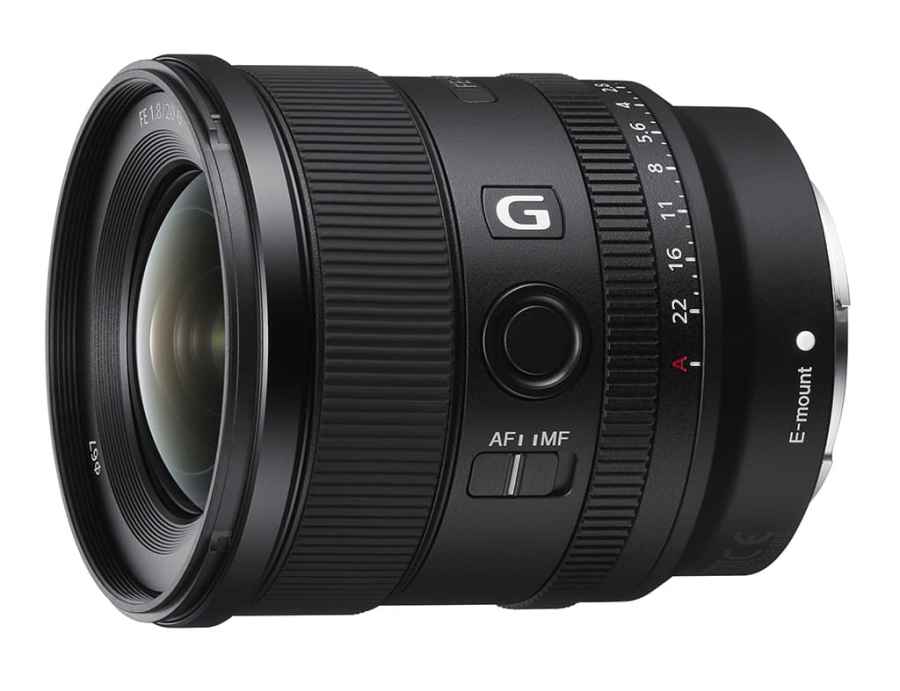Following yesterday’s guide to our testing team’s favourite camera bodies of this year, here are the best lenses. As with cameras, it’s been a tough 12 months, beset by supply problems with essential components from Chinese factories, but still, some great glass for a range of mounts made it through.
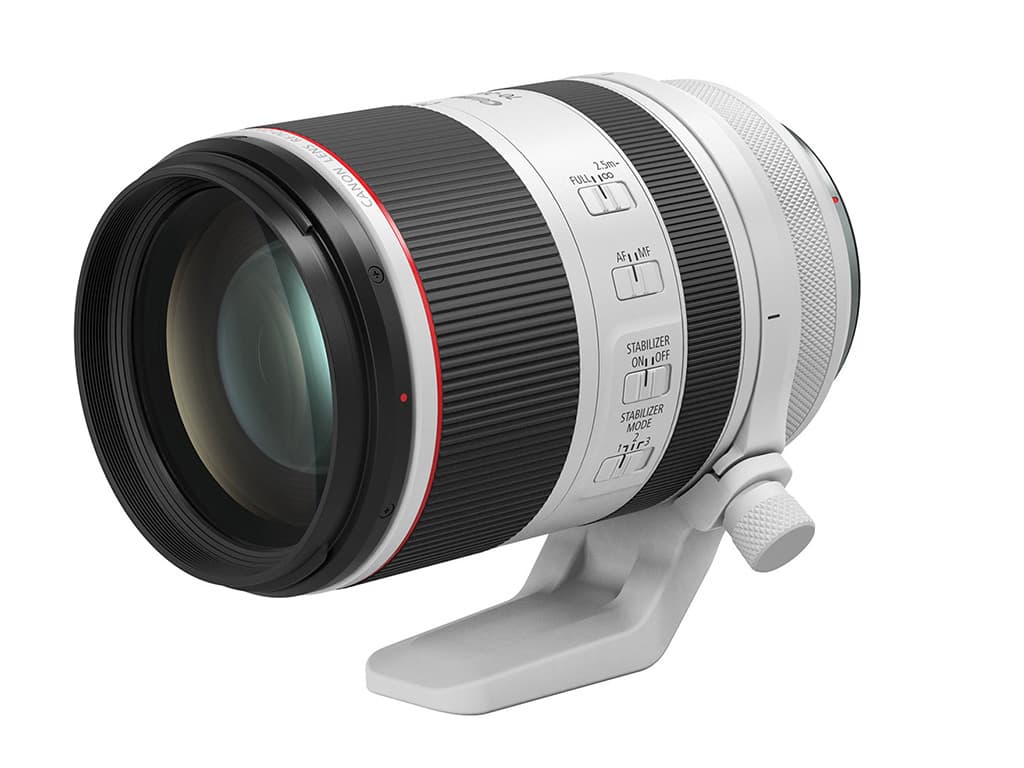
Canon RF 70-200mm F2.8L IS USM
£2,699
What we like
Small size and light weight
Supreme optics
Robust build quality
When Canon first showed mock-ups of its 70-200mm f/2.8 zoom for its nascent EOS R system, its standout feature was its remarkably small size. At less than 15cm in length, it’s much shorter than other professional fast telezooms, a feat that the firm has achieved by the simple expedient of using an extending, rather than internal zoom design. As a result, the lens is 27% shorter and 28% lighter than the equivalent EF-mount model.
Optically, Canon has employed 17 elements in 13 groups, with aspherical and Super UD glass elements to minimise aberrations. Dual Nano USM motors drive an electronically controlled floating focus system that’s designed to uphold image quality over the full range of focus distances down to the 70mm minimum. The lens is also equipped with three-mode optical image stabilisation, which enables the use of shutter speeds five stops slower than would otherwise be possible. Like other Canon’s pro-spec telephotos, the weather-sealed barrel has a white finish to reflect heat away from the optics.

Stunning optical quality belies the lens’s small size
It boasts a rotating and removeable tripod collar, along with a control ring next to the camera body. In use the lens delivers exceptional sharpness that’s remarkably consistent from the centre to the corners of the frame at all focal lengths. Distortion, chromatic aberration and vignetting are all extremely well controlled. Overall, the RF 70-200mm F2.8L IS USM is a seriously impressive performer, delivering the sensational sharpness and high image quality you’d expect from an L-series lens.
 Fujifilm XF 16-80mm F4 R OIS WR
Fujifilm XF 16-80mm F4 R OIS WR
£769
What we like
Really useful zoom range
Compact, weather-sealed design
Impressively effective OIS
While Fujifilm offers the most comprehensive APS-C lens range on the market, one option that for a long time was conspicuous by its absence was a weather-sealed, image-stabilised zoom with a 24mm-equivalent wideangle. The XF 16-80mm F4 was announced in the middle of 2019 but took an unusually long time to appear for real. Thankfully, it has been well worth the wait. Key to this lens’s attraction is its 24-120mm equivalent zoom range and constant f/4 maximum aperture, which enables it to effectively cover a wide range of subjects from landscapes to portraits. It’s also much more portable than the large-aperture XF 16-55mm F2.8 R LM WR, at 8.9cm in length and weighing 440g.
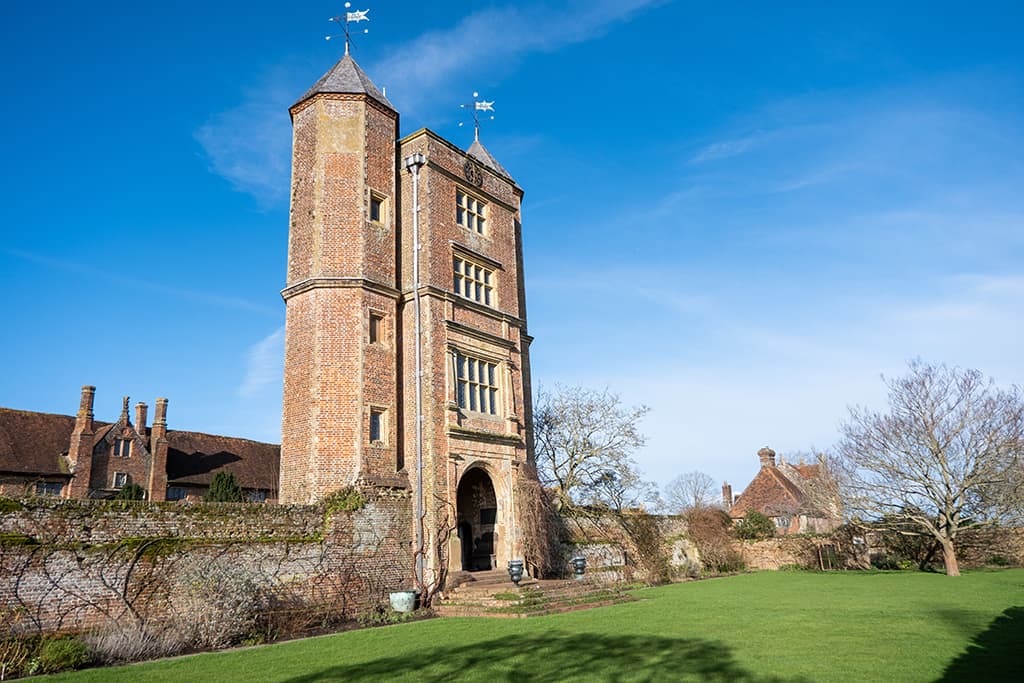
This is a great general-purpose zoom from Fujifilm
This makes it a great general-purpose lens for everyday use on the likes of the X-T3 and X-T4. Fujifilm users will find a familiar design, with zoom and focus rings joined by an aperture ring that clicks at 1/3-stop steps and has an A position for use in shutter priority and program modes. The rubberised zoom ring operates across a quarter turn, while the electronically coupled manual-focus ring rotates pleasingly smoothly.
In terms of image quality it’s a very respectable performer given its range. Central sharpness is very good wide open, peaking at f/5.6, but the corners of the image are noticeably softer, especially at wideangle. However, other aberrations are effectively suppressed, and the optical stabilisation is highly effective. As a result, this is a very likeable general-purpose lens that’s ideal for travelling.

Laowa 65mm f/2.8 2x Ultra Macro
£409
What we like
Remarkable 3x equivalent magnification
Excellent image quality
Relatively small and lightweight
Five years ago, the Laowa brand was barely known in the UK. But it’s made huge strides since then, with an impressive range of manual-focus optics that always offer something different fromthe norm. For example, while other makers are content with making macro lenses that give 1:1 magnification, it’s gone a step further in providing lenses that give twice life-size reproduction, while still focusing to infinity. Following on from its well-received 100mm f/2.8 macro for full-frame SLRs, the 65mm f/2.8 2x Ultra Macro is a scaled-down version for APS-C mirrorless cameras that’s available in Fujifilm X, Sony E and Leica L mounts. There’s also a 50mm f/2.8 version for Micro Four Thirds.

Laowa has delivered excellent quality and high magnification
It’s a compact lens that measures just 10cm in length and weighs only 335g; half as much as its 100mm sibling. Yet it allows you to fill the frame with a subject as small as 12x8mm, which is equivalent to 3:1 on full-frame. Focus and aperture operation are both manually controlled via traditional rings on the barrel. In terms of image quality, the Laowa 65mm f/2.8 2x Ultra Macro is an absolutely sublime lens that delivers consistently fine results, regardless of the focus distance or aperture.
Get everything right and you’ll be rewarded with fabulous images that combine excellent sharpness with beautifully blurred out-of-focus backgrounds. It’s a rare example of a lens that lets you see the world in a completely new way, and an easy recommendation for APS-C mirrorless users interested in close-up shooting.
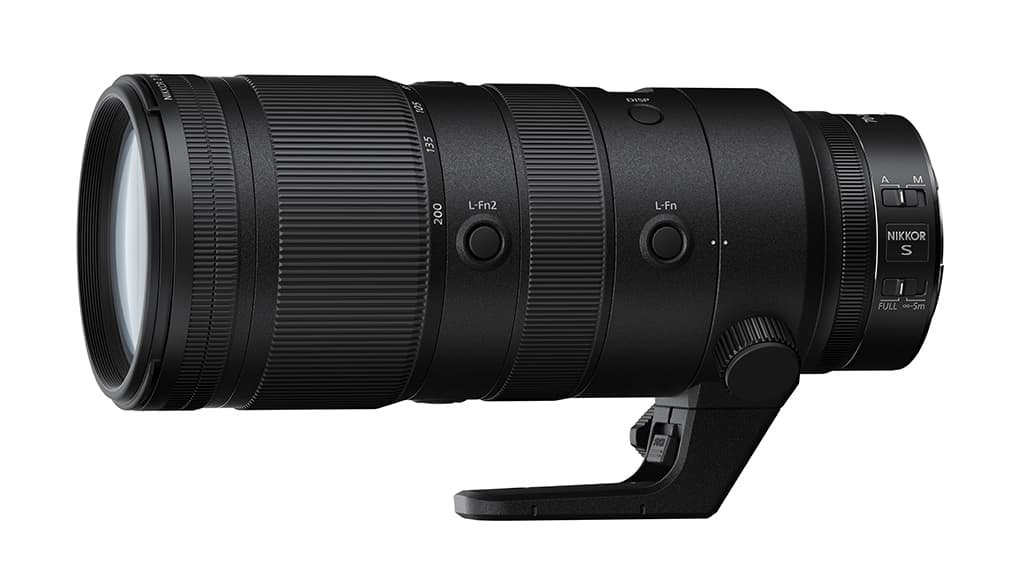
Nikon Nikkor Z 70-200mm f/2.8 VR S
£2,399
What we like
Fantastic optics
Superb handling
Close minimum focus
Nikon initially aimed its Nikkor Z full-frame mirrorless lens line-up squarely at travel photographers, with compact, lightweight and optically excellent f/1.8 primes and f/4 zooms. It’s taken a while for the firm to get around to making the f/2.8 zooms favoured by many photographers, but this year they finally arrived. Unlike Canon’s equivalent optic, this 70-200mm f/2.8 uses an internal-zoom design, which means it’s no smaller or lighter than its DSLR counterparts. But it impresses in other respects.

This state-of-the-art tele zoom gives stunning image quality
While the robust, weather-sealed barrel may at first glance look much like Nikon’s older F-mount designs, it has an array of additional features and controls. There’s a display panel on top that can toggle between showing the focal length, aperture and focus distance, while a control ring adjacent to the camera body allows the adjustment of exposure settings. Two programmable
L.Fn buttons can be set to activate AF or camera functions such as image playback, providing an unusual level of control via your left hand while shooting. Autofocus employs a fast, silent stepping motor, while the optical VR works together with in-body IS to provide up to 5.5 stops stabilisation.
Nikon has employed a state-of-the-art design with 22 elements in 16 groups, including six extra-low dispersion glass elements, two aspherical elements, one fluorite element and one short-wavelength reactive element. Together, these effectively suppress optical aberrations, giving incredibly sharp, clean images with beautiful background blur. It’s a superb lens that many Z-series owners will aspire to own.
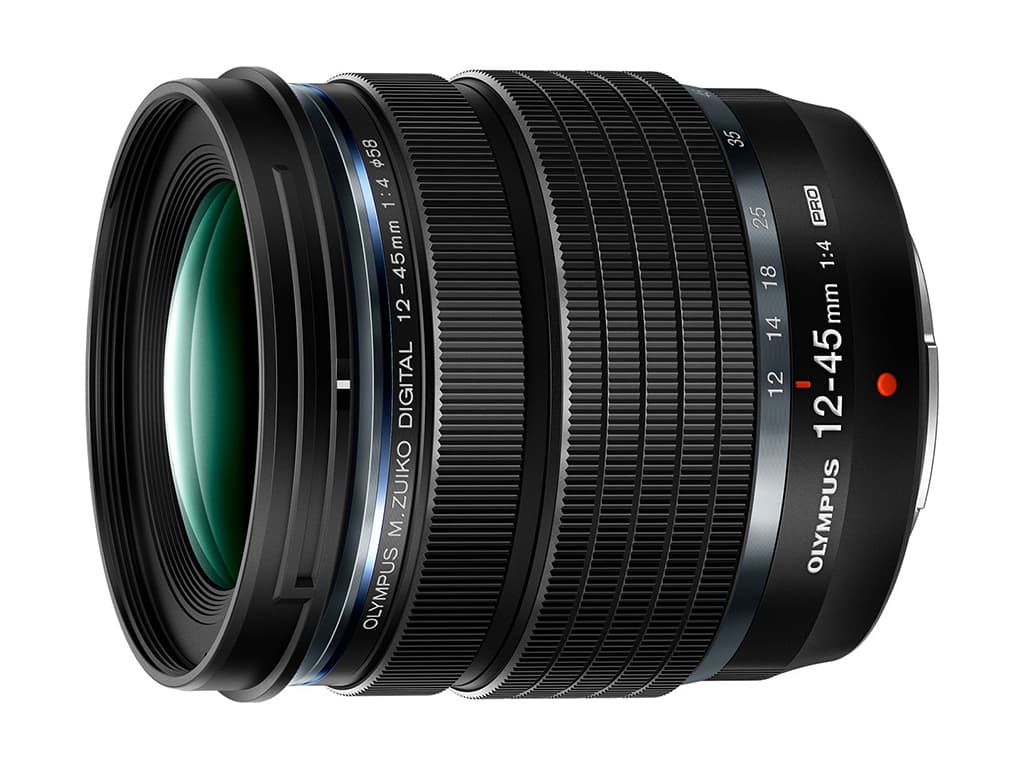
Olympus M.Zuiko Digital ED 12-45mm F4 Pro
£599
What we like
Extremely small and light
Weather-sealed design
Top-class optics
When mirrorless cameras first appeared, one of their main attractions was supposed to be decreased size and weight. But over time, this goal often seems to have fallen by the wayside. However, it’s still a key advantage of systems that use smaller sensors. Olympus claims that its 12-45mm f/4 is the world’s smallest and lightest zoom with a constant maximum aperture. It’s designed to provide users with premium optics and tough, weather-sealed build quality in a tiny package that’s just 7cm long and weighs 254g, making it the perfect complement to cameras like the OM-D E-M5 Mark III. With a 12-element, 9-group optical design that’s based on the firm’s superb 12-40mm f/2.8, the lens makes lavish use of special glass.
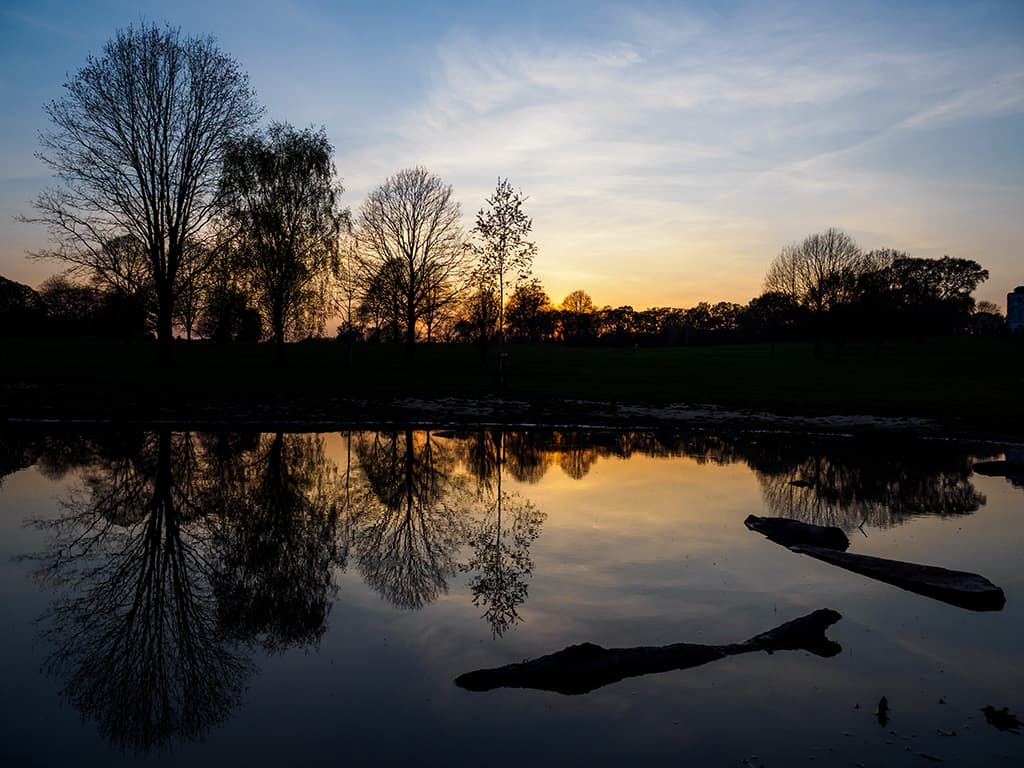
Olympus has combined small size with superb optics
It incorporates aspheric, dual super-aspheric (DSA), high refractive index (HR), super-high refractive index and Extra-low Dispersion (ED) elements into its construction in order to minimise aberrations, while Olympus’s Zero coating is applied to suppress flare and ghosting. As part of the premium Pro series, the 12-45mm F4 is also designed to be dust-, splash- and freeze-proof. Its minimum focus distance ranges from 12cm at wideangle to 23cm at telephoto, maintaining an impressive 0.5x equivalent magnification across the zoom range.
Best of all, the 12-45mm has inherited its larger-aperture sibling’s stellar image quality, delivering excellent sharpness from corner to corner regardless of focal length or subject distance. With its rare combination of ruggedness, portability, and superb image quality, it’s a stunning lightweight standard zoom.
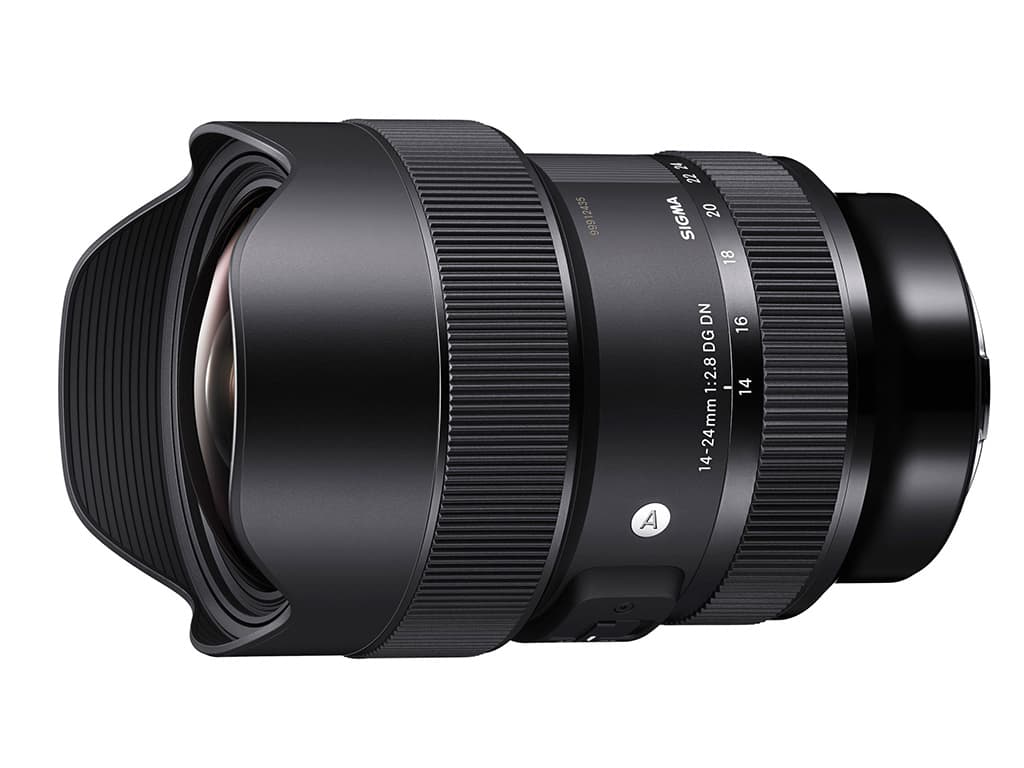
Sigma 14-24mm F2.8 DG DN Art
£1,299
What we like
Much smaller than its SLR equivalent
Dust- and splash-proof design
Since it teamed up with Leica and Panasonic to form the L-Mount Alliance towards the end of 2018, Sigma has shifted its attention away from designing lenses for DSLRs, instead focusing on a new range of DN optics for full-frame mirrorless.
One of the first fruits of these efforts is this impressive large-aperture ultra-wideangle zoom, which is available in both the Sony E and L mounts. One big advantage of mirrorless technology is the way it enables wideangles to be made considerably smaller and lighter. This lens is a case in point; it’s slightly shorter, noticeably narrower in diameter, and 355g lighter than its DSLR equivalent. This comes despite the fact that it uses a more complex optical formula of 18 elements in 13 groups, including five special low-dispersion glass elements and one ‘F’ low-dispersion glass element to suppress chromatic aberration, which is often problematic with ultra-wide lenses.

Sigma has delivered a really impressive wideangle zoom
As befits a lens likely to be used extensively by landscape photographers, the barrel boasts a dust- and splash-proof structure, including a rubber seal around the metal mount. Its bulbous front element means that there’s no facility to fit screw-in front filters, but a rear holder allows the use of gel filters. Our testing revealed that the lens was fully capable of keeping up with the Sony Alpha 7R IV’s 61MP full-frame sensor, delivering impressive levels of detail at its optimum apertures of f/5.6 to f/11. If you’re into landscape, astro or architectural photography, there’s very little not to like.
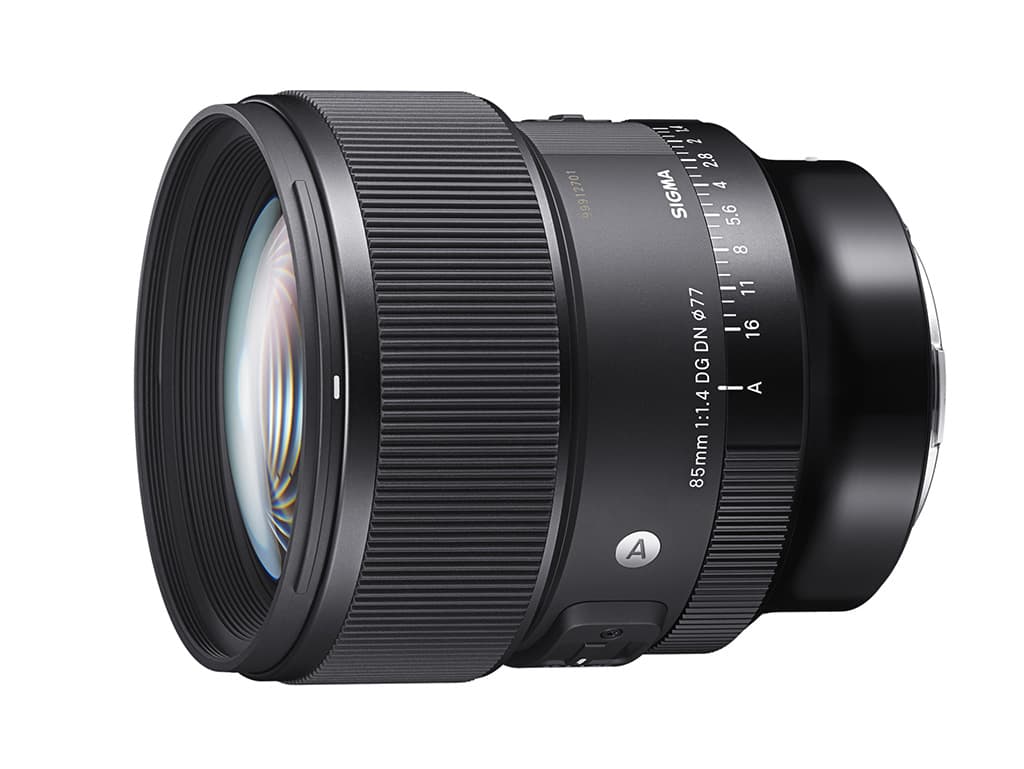
Sigma 85mm F1.4 DG DN Art
£999
What we like
Fantastic optical quality
Excellent handling
Built-in aperture ring
Sigma has built up a strong reputation for its Art series of f/1.4 primes for DSLRs, which offer impressive sharpness even at maximum aperture. But the penalty is often size and weight; for example, its 85mm F1.4 DG HSM Art is well over a kilogram. With its latest designed-for-mirrorless 85mm F1.4 DG DN Art for E and L mounts, however, the firm has refined its design philosophy.
This lens is fully 30mm shorter and 500g lighter than the DSLR version, yet it gives up absolutely nothing in terms of quality. In terms of design, it features an electronically coupled focus ring, along with an aperture ring that can be switched between clicked and clickless operation. It also has a lockable A position to pass control to the camera body. The barrel features dust- and splash-resistant construction, the diaphragm employs 11 curved blades for attractive bokeh, and autofocus is driven by a silent stepper motor.

This lens combines excellent sharpness with lovely blur
Optically, the lens employs 15 elements in 11 groups, including five special low-dispersion glass elements, one aspherical element and four high refractive index glass elements to minimise optical aberrations. It also makes full use of in-camera software corrections. As a result, image quality is stunning, with extraordinary sharpness even at f/1.4, and
no unsightly colour fringing due to chromatic aberration.
Sigma has created a gem of a lens that delivers astonishing image quality and excellent handling. It’s also great value, matching its Sony FE 85mm F1.4 GM rival for £500 less. Overall, it’s one of the best lenses we’ve ever tested.

Sony FE 20mm F1.8 G
£949
What we like
Impressively light weight
Excellent aperture ring
Superb sharpness
Designed to be a compact lens promising excellent edge-to-edge sharpness and operational reliability, this is Sony’s widest fixed-focal-length FE prime to date. It’s part of the firm’s mid-range G-series line-up, rather than its premium G Master range, but it still maintains many of the same attractive features found in its pricier stablemates. At just 373g, it’s the lightest in its class by some distance. The lens features a complex optical design that’s made up of 14 elements in 12 groups.
It includes two advanced aspherical elements to provide high sharpness at wide apertures and mitigate sagittal flare, where points of light appear as if they’re spreading at the periphery of the frame. To counteract the effects of chromatic aberration, the lens also employs three extra-low dispersion glass elements. Autofocus is driven by two extreme dynamic linear motors. Operationally, it leaves nothing to be desired.
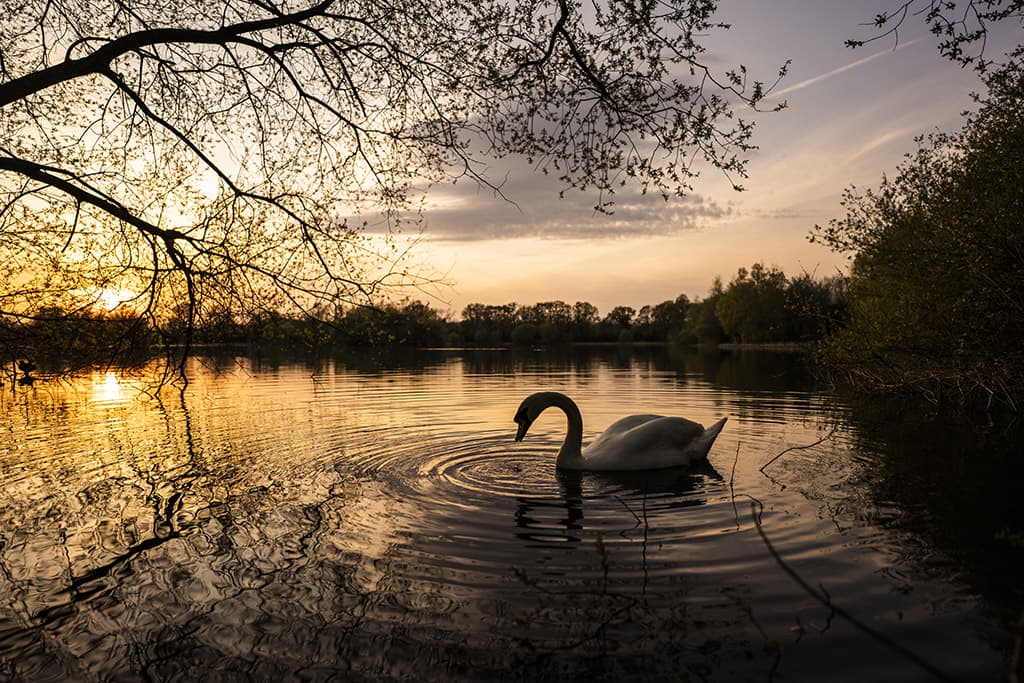
An example of the lens’s sublime image quality
A superbly designed aperture ring provides the choice of either click-stops at 1/3-stop intervals, or silent control for movie recording. At the far end of the scale, an ‘A’ setting hands control back to the camera’s front dial if you prefer to work in this way. A large focus hold button is found on the side of the barrel and can be reassigned to operate different functions from the camera menus, while manual focus benefits from Sony’s linear response design to provide incredibly precise control.
Most importantly, image quality is sublime, with the lens delivering very respectable sharpness wide open, and truly excellent results around f/5.6. All in all, it’s one of the best wideangle prime lenses that Sony full-frame users can buy.
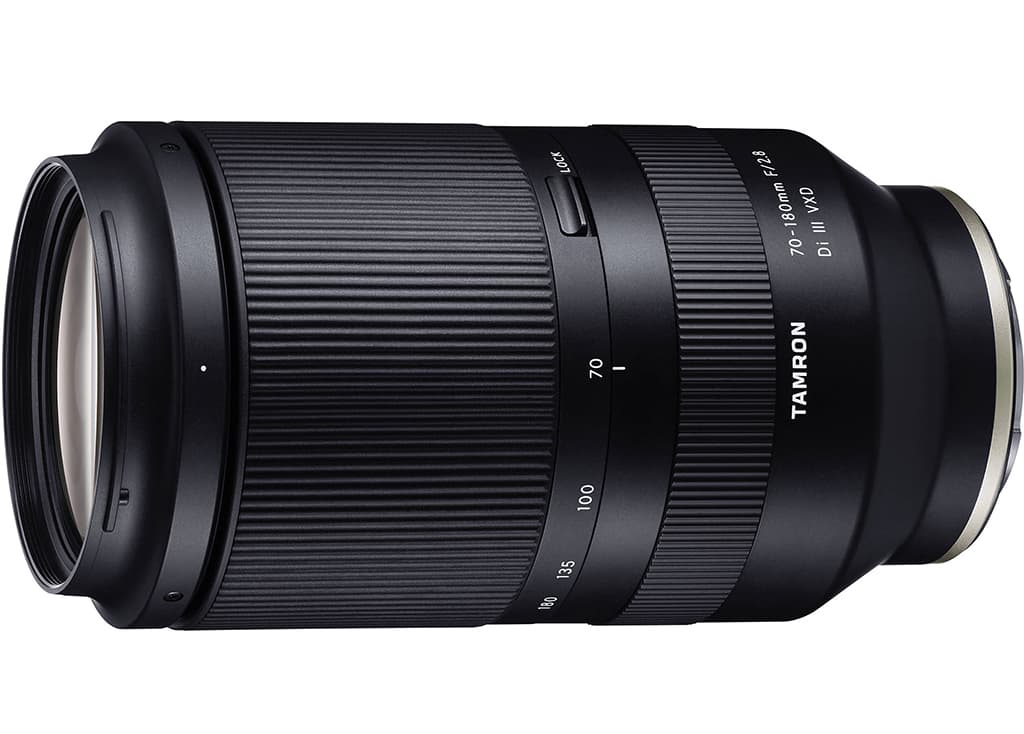 Tamron 70-180mm F/2.8 Di III VXD
Tamron 70-180mm F/2.8 Di III VXD
£1,349
What we like
Remarkably small and light
Quick autofocus
Attractively priced
As with Sigma, Tamron has now decided to concentrate on making new lenses for full-frame mirrorless cameras, currently in Sony E mount. The firm has adopted a strategy of producing designs that are compact, lightweight and affordable, particularly when compared to their Sony counterparts. Its 70-180mm completes a trilogy of fine f/2.8 optics, following on from 17-28mm wideangle and 28-75mm standard zooms. Tamron has come up with a very different design philosophy to Sony’s pro-spec 70-200mm f/2.8.

Tamron has made an unusually small f/2.8 telezoom
By limiting the telephoto range, doing without optical stabilisation and using an extending zoom mechanism, it’s produced a lens that’s three-quarters of the length and 55% of the weight – in fact it’s even smaller and lighter than Sony’s 70-200mm f/4. This is sure to be welcomed by photographers who are turning to mirrorless in order to shed weight from their bag. Despite its light weight, this is a well-constructed lens that’s weather-sealed for shooting outdoors in less than perfect conditions.
Like all of the firm’s full-frame E-mount designs, it accepts 67mm filters. The optical construction employs 19 elements in 14 groups, including one extra-low dispersion, five low dispersion, one glass moulded aspherical and two hybrid aspherical elements. Together these do a fine job of maintaining sharpness while suppressing colour fringing. As a result, this is a great choice for Sony users looking for an affordable fast telezoom. It’s small, light, great value and performs well.
Further reading
Best lenses for mirrorless systems

